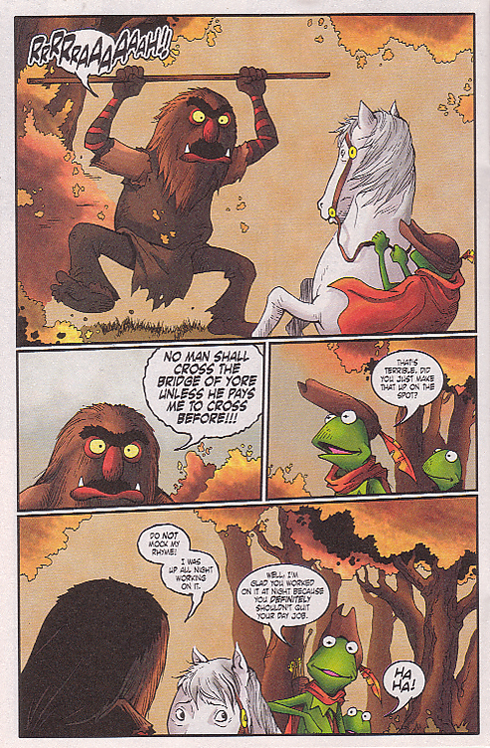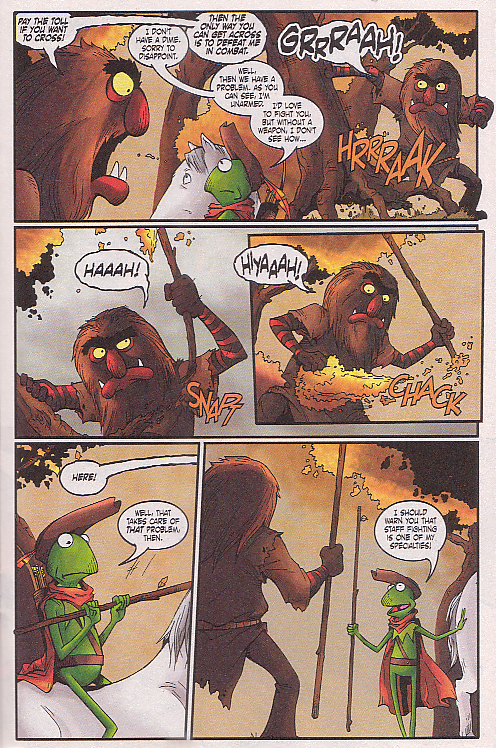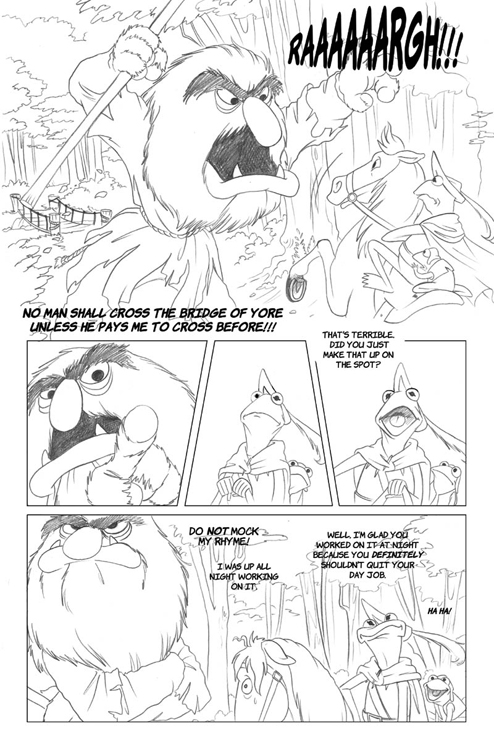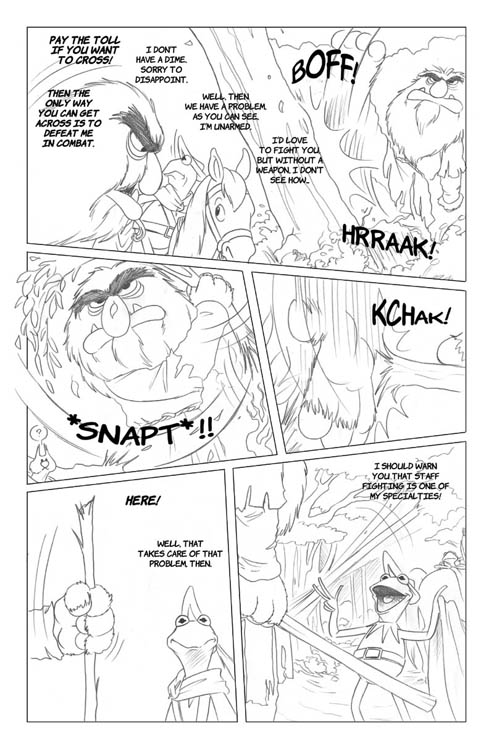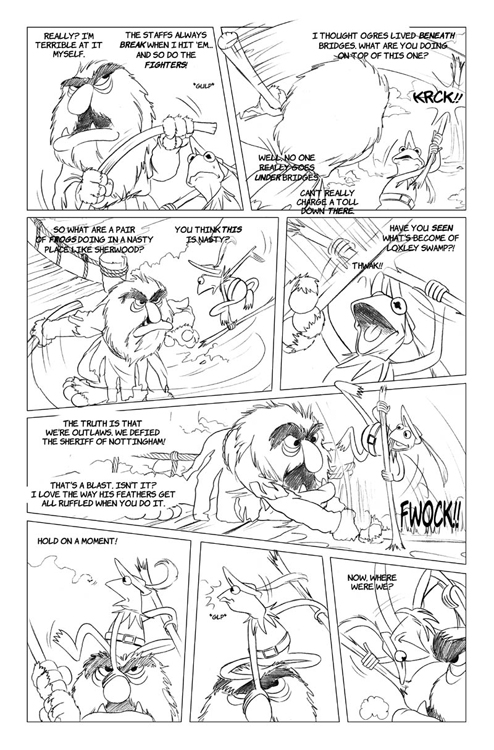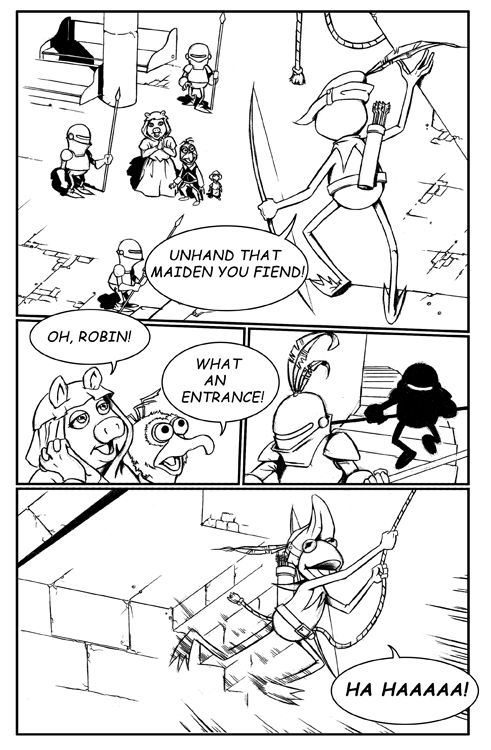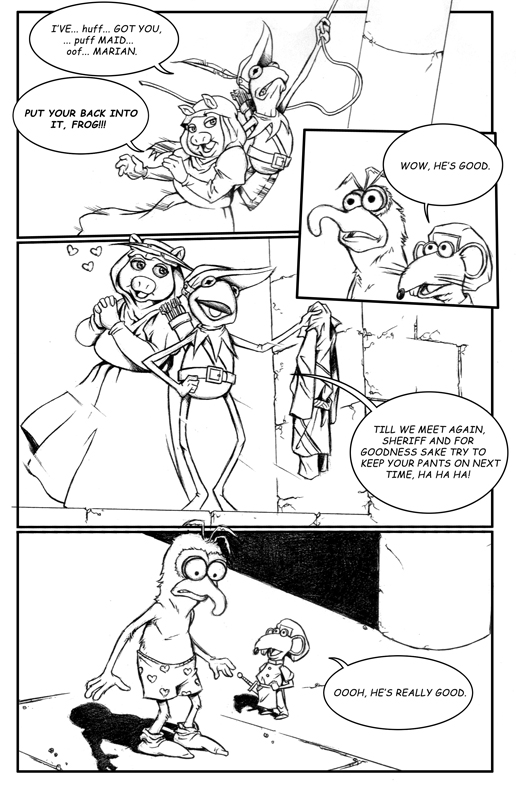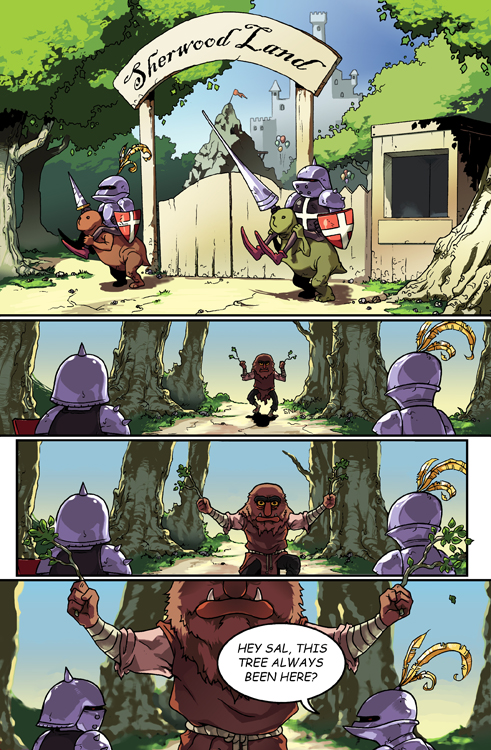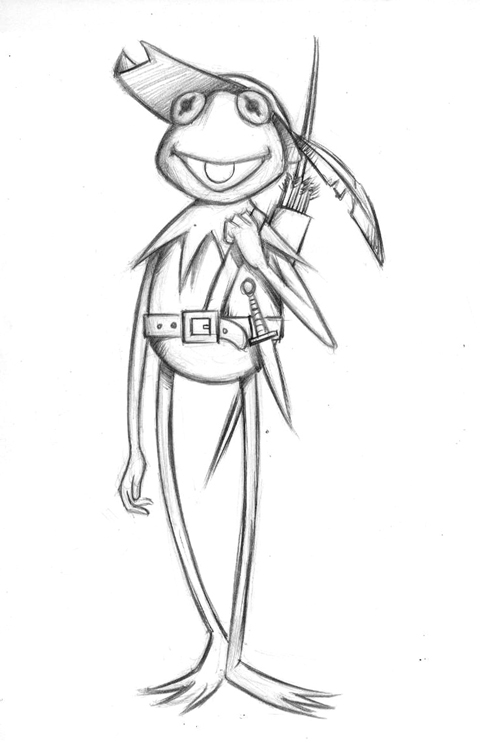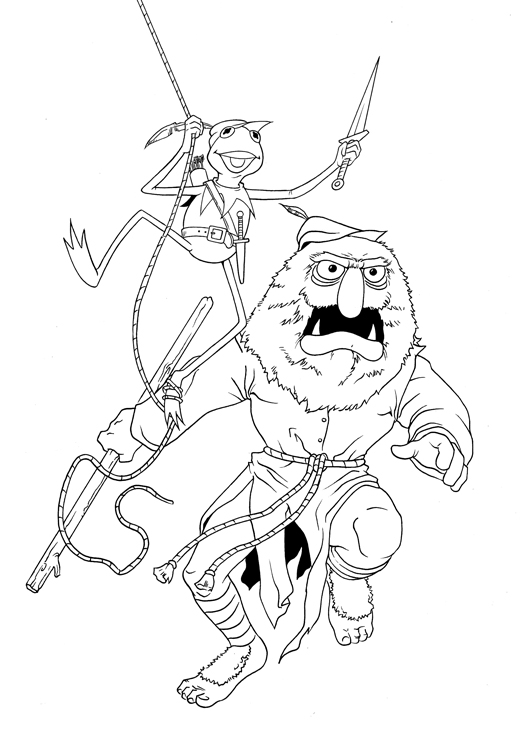A couple days ago I posted some Muppet Robin Hood audition art from Armand Villavert, Jr. It was strong enough to get Armand the gig, but he wasn’t the only artist who was considered. After all, this was one of the first Muppet comics to be produced since the 1980s. There was a considerable amount of fan interest in it, along with plenty of artists who grew up watching the Muppets and wanted a chance to put their spin on Jim Henson’s classic characters.
In fact, at one point, it really looked like Armand might not be able to draw the book. Muppet Robin Hood had already been solicited and we had a deadline in place, so Paul Morrissey, the comic’s editor, had to scramble to find a potential replacement. And the first person we both thought of was Amy Mebberson.
Now if you’re a fan of BOOM’s Muppet comics, then Amy Mebberson is probably a name you know well. She was the artist on both Muppet Peter Pan and Muppet Sherlock Holmes, and she served as the guest artist for several issues of Roger Langridge’s Muppet Show comic. But all of that work came after Muppet Robin Hood. At the time, Paul wasn’t sure how well Amy could draw the Muppets or whether her style would be one that Disney would get behind. To get her greenlit, he asked Amy to draw a short sequence from my script.
What follows is the sequence as it ran in the comic, followed by Amy’s version of it. Her version was never inked or colored and the lettering is rough and temporary, but it’s easy to imagine how it would’ve come together. Whichever version you prefer, seeing the two side-by-side helps illustrate just how much control the artist has in shaping the tone and pacing of the story, even when they’re working from a completed script. Armand’s version reads considerably different than Amy’s.
Here’s the sequence as it ran in the comic, with art by Armand Villavert, Jr.
And here’s the sequence as drawn by Amy Mebberson.
Amy really managed to bring out the comedic beats. Her version is laugh-out-loud funny and Kermit’s reaction to being handed the staff is priceless. Armand’s version, on the other hand, reads a little more aggressively. He chose to draw the sequence fairly straight, making sure the action got its due. Neither is right or wrong. They’re just different.
I would’ve loved to work with Amy (and I since have on a different project), but I’m just glad she got her chance to work on the Muppets. After seeing the pages above, it was clear to me that she was born to draw these characters. If you haven’t read Muppet Peter Pan (written by my good friend Grace Randolph) and Muppet Sherlock Holmes, do yourself a favor and hunt them down before they go out of print!

